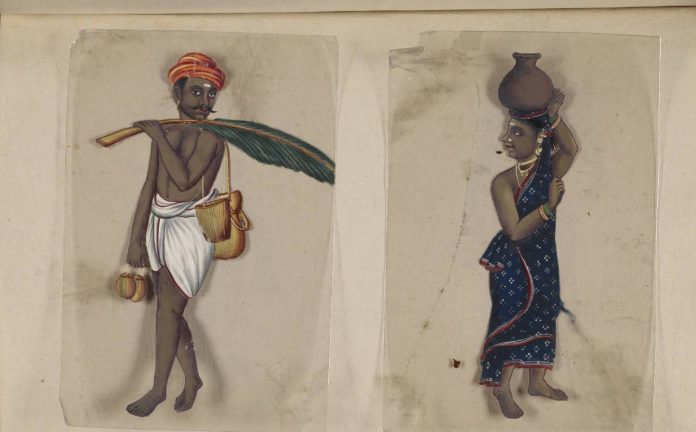Introduction
Caste is closely connected with the Hindu philosophy and religion, custom and tradition. It is believed to have had a divine origin and sanction. The Varna system prevalent during the Vedic period was mainly based on division of labour and occupation. The caste system owns its origin to the Varna system. There are more than 2800 castes and sub-castes in India.
The caste stratification of the Indian society had its origin in the chaturvarna system (Chatur means Four). According to chaturvarna system the Hindu society was divided into four main varnas –
- Brahmins ( a priest and scholar)
- Kashtriyas (ruler and soldier)
- Vaishyas (merchant)
- Shudras (peasant, labourer and servant)
The first three castes are ‘twice-born’ or ‘dwija’ since the men from these castes are entitled to wear the sacred thread at the Vedic rite of upanayana, which the Shudras were not allowed to wear the sacred thread.
Origin of the word Caste: The term Caste was derived from the Spanish word “Casta” meaning breed or race. It means people of the same caste belonged to the same race. The word caste also signifies race or kind. The Sanskrit word for caste is varna which means colour.
The term, caste was used by the British who ruled India until 1947. The British who wanted to rule India efficiently made lists of Indian communities. They used two terms to describe Indian communities- Castes and Tribes. The term caste was used for Jats and also for Varnas. Tribes were those communities who lived deep in jungles, forests and mountains far away from the main population
Definitions of Caste by various Sociologists
- According to Risely caste is a collection of families bearing a common name claiming a common descent from a mythical ancestor professing to follow the same hereditary calling and regarded by those who are competent to give an opinion as forming a single homogeneous community.
- For Dumont caste is not a form of stratification but as a special form of inequality. The major attributes of caste are the hierarchy, the separation and the division of labour.
- According to Maclver and Page when status is wholly predetermined so that men are born to their lot without any hope of changing it, then the class takes the extreme form of caste.
- N Srinivas sees caste as a segmentary system. Every caste for him divided into sub castes which are the units of endogamy whose members follow a common occupation, social and ritual life and common culture and whose members are governed by the same authoritative body viz the panchayat.
- Weber sees caste as the enhancement and transformation of social distance into religious or strictly a magical principle.






Thanks for the nice article!
whoah this weblog is great i really like studying your posts. Stay up the great work! You understand, lots of individuals are searching around for this information, you could aid them greatly.
Thank you
I’ve been exploring for a little for any high quality articles or weblog posts on this sort of house . Exploring in Yahoo I ultimately stumbled upon this website. Reading this information So i’m satisfied to convey that I’ve a very just right uncanny feeling I found out exactly what I needed. I most unquestionably will make sure to don’t omit this website and provides it a look regularly.
I just wanted to send a quick note to be able to say thanks to you for these marvelous ways you are placing at this site. My particularly long internet lookup has at the end of the day been rewarded with sensible points to write about with my family. I ‘d declare that we website visitors are definitely blessed to dwell in a really good website with many perfect individuals with interesting tricks. I feel very much grateful to have used your entire web page and look forward to plenty of more pleasurable moments reading here. Thank you once again for a lot of things.
Welcome
Hi all, here every one is sharing their opinions, thus it’s nice to read this weblog, and I see this website every day.
Feel free to visit my website :: tracfone
I gotta favorite this site it seems extremely helpful extremely helpful
Thank you
Enjoyed looking through this, very good stuff, thankyou.
Welcome